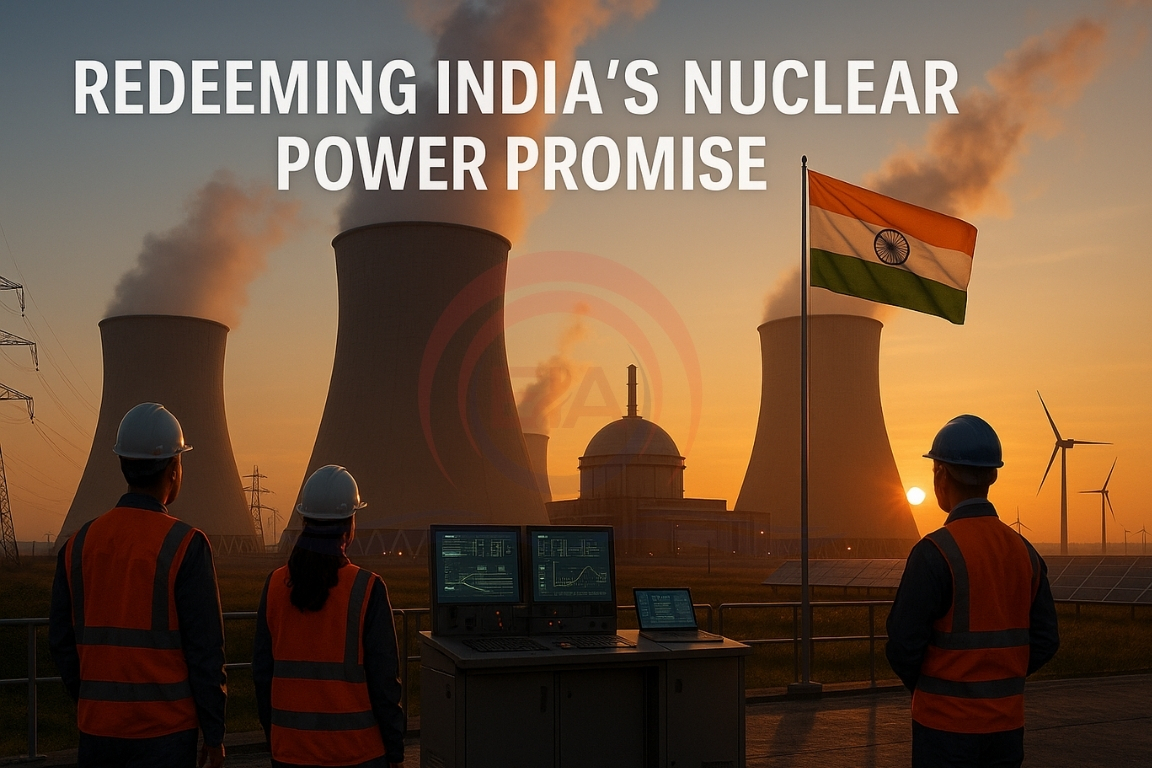The government plans to amend key laws like the Atomic Energy Act, 1962 and the Civil Liability for Nuclear Damage Act, 2010 to enable private participation. India aims to reach 100 GW nuclear power capacity by 2047.
India’s Nuclear Energy Journey
- India began early with Asia’s first research reactor Apsara in 1956 and nuclear power project at Tarapur in 1963.
- Dr. Homi Bhabha had envisioned 8 GW capacity by 1980, but geopolitical isolation after 1974 (due to PNE) slowed the programme.
- Indigenous development led to 220 MW PHWRs across Narora, Kaiga, and Kakrapar, upgraded to 700 MW (operational in 2024).
- India’s global integration post-1998 nuclear tests allowed collaboration with Russia (Kudankulam), but the CLNDA 2010 discouraged other foreign partners.
Why Nuclear Power is Crucial
- To become a developed economy by 2047, India needs ~5x its current energy capacity.
- Renewables are intermittent; nuclear power is reliable and low-carbon.
- Nuclear generation is vital for India’s net-zero goals and energy security.
- Global momentum is shifting back to nuclear (e.g., COP28 Declaration to triple nuclear energy).
Government’s Strategy: Three-Track Plan
- Standardise Small Modular Reactors (SMRs): Use proven PHWR designs to build smaller reactors quickly and cheaply.
- Expand 700 MW PHWRs: Speed up land acquisition, licensing, and supply chains for NPCIL’s reactor expansion.
- Revive Foreign Collaboration: Push stalled negotiations with France and the U.S. to bring advanced technology.

Challenges Needing Reforms
- Atomic Energy Act, 1962: Needs amendments to allow private firms in nuclear power generation.
- CLNDA 2010: Current liability clauses deter foreign suppliers; needs reassessment.
- Tariff Regulation Conflict: Disputes on pricing highlight need for clearer regulatory overlap between Atomic Energy Act and Electricity Act.
- Safety Oversight: AERB must be made a legally independent regulator.
Way Forward & Incentives Needed
- Recognise nuclear as “green energy” to qualify for tax and financial benefits.
- Allow foreign direct investment (FDI) up to 49% while keeping Indian control.
- Offer viability-gap funding and long-term power purchase agreements.
- Ensure timely implementation of Joint Ventures (e.g., NPCIL-NTPC at Mahi Banswara).
Conclusion:
To meet energy and climate goals, India must open its nuclear sector to private and global partners. Bold legal and financial reforms, along with regulatory independence, are critical to unlocking its full nuclear power potential.





